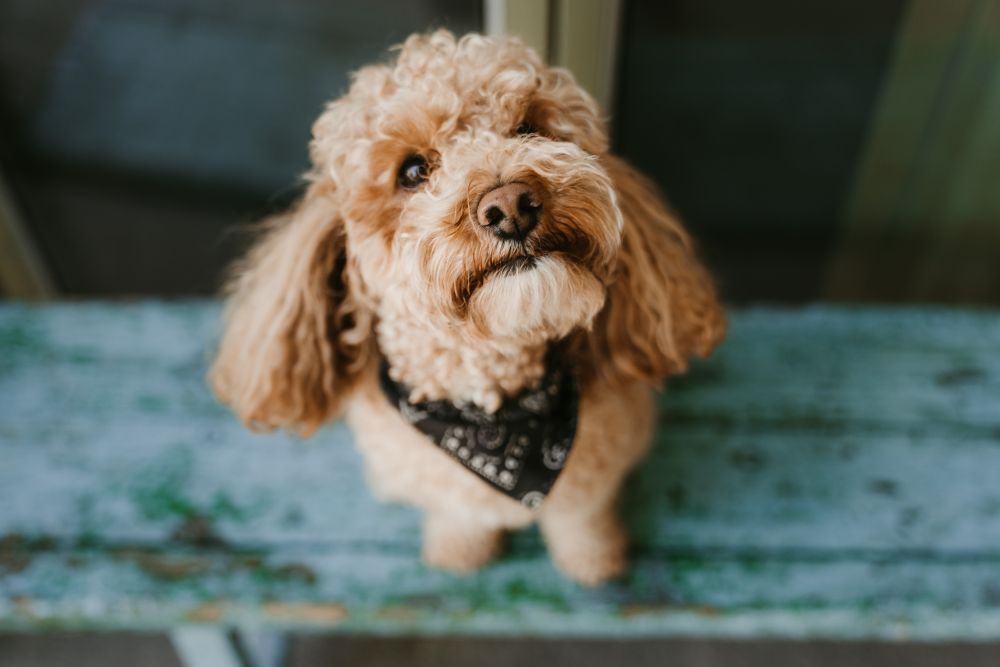5 Ways on How to Calm Your Overexcited Pup

Is your dog an excitable breed when you take out the leash, or when you hear a knock on the door? Although they may be cute, that drive should be well managed, and ensuring the puppy is disciplined is important.
Whether the dog is possessed by zoomies, or simply overjoyed, it is important to understand a dog’s behavior and know how to properly calm a very excited dog down. Now let’s look at the causes of such behavior and five simple things you can do to get them to calm down.
What’s Got Your Pup So Pumped? Understanding Their Hype
But to comfort your dog, one must know what causes them to get so worked up. Excessive energy relates either to unnecessary energy reserves or stimulation, or even anxiety.
Dogs make movements to convey and display feelings, happy dogs move around, do the wagging of the tail, jumping, barking, spinning maybe like a tornado. Knowing what pushes them can assist you in coming up with measures of managing this enthusiasm.
Some common causes include:
🐾 Lack of regular exercise or mental stimulation.
🐾 Excitement triggered by specific words or actions, like grabbing their leash.
🐾 Anxiety or overstimulation in new or busy environments.
🐾 Reinforcement of excited behaviors, like giving attention when they jump.
5 Pawesome Ways to Help Your Dog Chill Out

1. Stay Cool, Calm, and Collected
Dogs mimic your behavior, so if you’re stressed or fired up, that’s how your dog will become as well. Some of the things that one should avoid are loud talking to the dog as well as erratic body movements that may trigger the dog’s excitement. Trying to keep yourself and the household calm helps the puppy lower its energy level.
🐾 Use a soothing voice to give commands.
🐾 Avoid eye contact if they’re jumping or overexcited.
🐾 Stay patient and consistent with your approach.
2. Redirect Their Energy with a Simple Task
A basic element: When your canine jumps, look away. Words such as ‘sit’ ‘down’ act as puzzles to them, but at the same time these are effective redirections making them focus on the task given by you rather than what is around them.
🐾 Ask them to perform a command they already know, like “stay.”
🐾 Reward their calm behavior immediately with a treat or praise.
🐾 Make this a regular practice so they associate excitement with tasks.
3. Provide Physical and Mental Exercise
Other times, your dog requires to expend excess energy. Their excitement can be well managed through some regular exercise regimes. The need to also challenge their brain frequently to ensure they get as equally tired as they would if they were giving some physical exercise.
🐾 Take them on daily walks or runs.
🐾 Engage them in games like fetch or tug-of-war.
🐾 Use puzzle toys to keep their minds busy.
Short Tip: Let your dog chase bubbles for a fun and tiring activity.
4. Teach a “Calm” Command
How valuable it is to teach your dog what specific cue or word means relaxation? They do it at low energy levels so that they can use captured responses when they are high with energy.
🐾 Use a cue like “calm” or “settle” during quiet times.
🐾 Reward their calm demeanor with treats or praise.
🐾 Gradually practice this in more stimulating situations.
5. Create a Chill Zone
Having a specific room reduces stress in your dog. This space should be filled with familiar objects such as their bed or blanket or toys. In the long-run they will learn to run to the device when they require the break.
🐾 Choose a quiet spot in your home away from distractions.
🐾 Include calming aids like white noise or a lavender-scented spray.
🐾 Encourage them to use the area when they’re overstimulated.
Short Tip: Rotate toys in the chill zone to keep them fresh and interesting.
The Role of Nutrition in Your Dog’s Behavior

Believe it or not, your dog’s diet can play a significant role in their energy levels and behavior. Feeding them a balanced diet with all the necessary nutrients ensures their body and mind function properly.
🐾 Avoid foods high in sugar or artificial additives, as they may cause hyperactivity.
🐾 Look for calming supplements like L-theanine or chamomile in treats.
🐾 Feed on a regular schedule to avoid hunger-related irritability.
The Importance of Bonding Time
Sometimes, overexcitement stems from an eagerness to connect with you. Regular bonding time helps fulfill their emotional needs and can reduce high-energy outbursts.
🐾 Spend quality time playing, grooming, or simply relaxing together.
🐾 Practice calm interactions, like sitting quietly by your side.
🐾 Build trust and understanding through consistent positive reinforcement.
How to Prevent Overexcitement in the Future
Prevention is just as important as managing overexcitement in the moment. Building habits that keep your dog balanced and calm can help minimize high-energy outbursts altogether.
🐾 Exercise regularly: A tired dog is a happy, calm dog.
🐾 Avoid reinforcing bad habits: Ignore jumping or barking to discourage the behavior.
🐾 Train consistently: Practice commands like “stay” and “calm” daily.
🐾 Expose them gradually to stimuli: Slowly introduce them to triggers in controlled environments.
Final Woof of Wisdom
Managing an overexcited dog isn’t about dimming their joy—it’s about teaching them balance. With patience, consistency, and these tips, you’ll transform your energetic pup into a calm and well-mannered companion.
For additional tips, visit this helpful guide.
Remember: every tail wag and happy bark is part of their charm. You’ve got this! 🐾






